Amstaff vs Pit Bull is an easy question to answer because Amstaffs are Pit Bulls! But the American Pit Bull Terrier is considered to be the “original” Pit Bull and, at first, appears identical to the Amstaff. According to the AKC, the main difference between the breeds is their size standards.
While these two breeds otherwise appear identical, they are quite different dogs! Telling the two apart on sight alone may be hard, but learning a bit about what makes each unique will clear up any confusion!
Key Differences Between Amstaffs and Pit Bulls
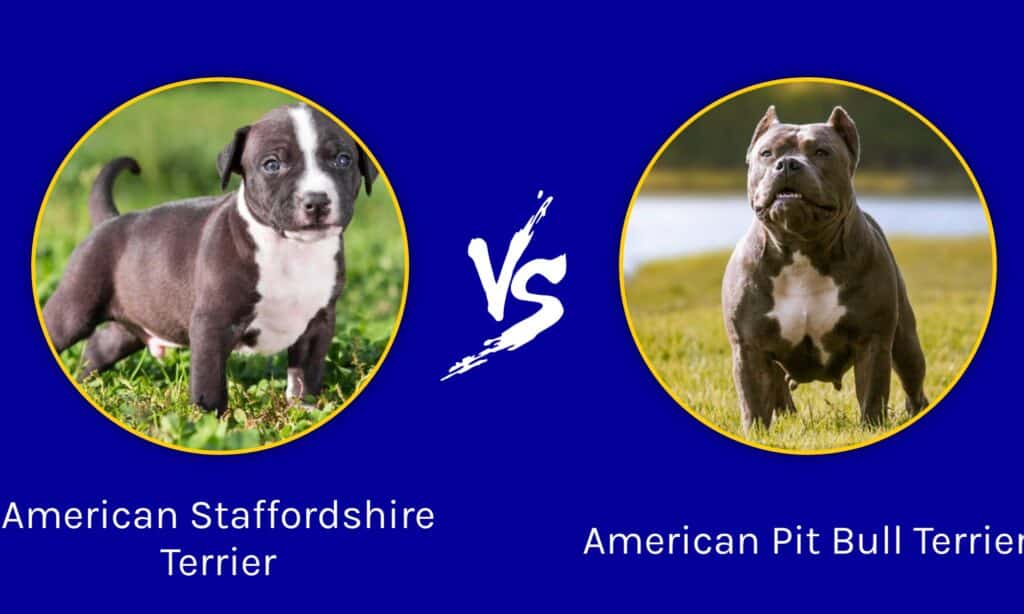
The key differences between Amstaffs and Pit Bulls are physical characteristics, personality, and behavior.
Let’s explore these differences in detail!
Amstaff vs American Pit Bull: Physical Characteristics
The Amstaff and the American Pit Bull are highly similar and often mistaken for each other. Their similar height, build, and coloration makes it difficult to tell them apart at first.
In general, Pit Bull breeds are medium-sized dogs with short coats that require little grooming. The ears are traditionally docked but are naturally long and set high on the head. Pit Bulls have large heads, stocky bodies, and thick legs. They have long tails that may or may not be docked with smooth fur the same length as the rest of the body.
While the Amstaff and the American Pit Bull are highly similar physically, there are key differences that set each of these Pit Bull breeds apart!
The Amstaff Is Shorter And Stockier
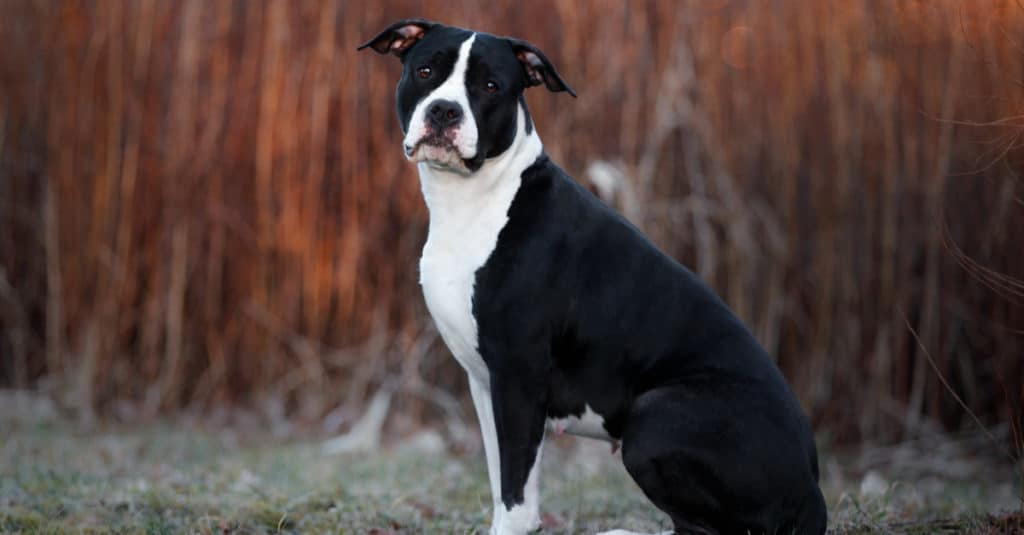
American Staffordshire Terriers have less variation in height than American Pit Bulls and only have four color variations.
©OlesyaNickolaeva/Shutterstock.com
The Amstaff can be a bit shorter than the American Pit Bull, with less height variation allowed for show dogs. Males are between 18 and 19 inches in height and weigh up to 70 pounds. Females are between 17 and 18 inches in height and weigh up to 55 pounds.
Amstaffs are often heavier than American Pit Bulls and have less visible muscle tone. This breed has four breed standard color variations with ‘piebald’ or solid markings over their body. Standard coat variations are black, brown, white, and tan.
The American Pit Bull Looks More Athletic

American Pit Bulls have a much wider size variation than Amstaffs and are visibly more muscular.
©iStock.com/VictorRicoFoto
American Pit Bulls are a bit leaner than Amstaffs, with visible muscle tone over the body. There is a wider margin of height and weight in this breed as well. Male American Pit Bulls are between 18 and 21 inches in height and weigh up to 50 pounds. Females are between 17 and 20 inches in height and weigh up to 60 pounds.
Amstaff vs Pit Bull: Personality and Behavior
Both the Amstaff and the American Pit Bull have excellent potential as family dogs. Deeply devoted and adaptable, these breeds adjust to children well. Both dogs require quite a bit of obedience training from puppyhood to tame their natural stubbornness. They are also quite friendly but require training and lots of socialization to bring out the absolute best in them!
Potential owners of the Amstaff or American Pit Bull should also keep in mind that these dogs are strong and energetic. Owners of any Pit Bull breed will attest that play and exercise are the keys to a happy Pit! Additionally, both breeds become extremely attached to their owners and will develop separation anxiety.
The Amstaff Is Friendly But Reserved
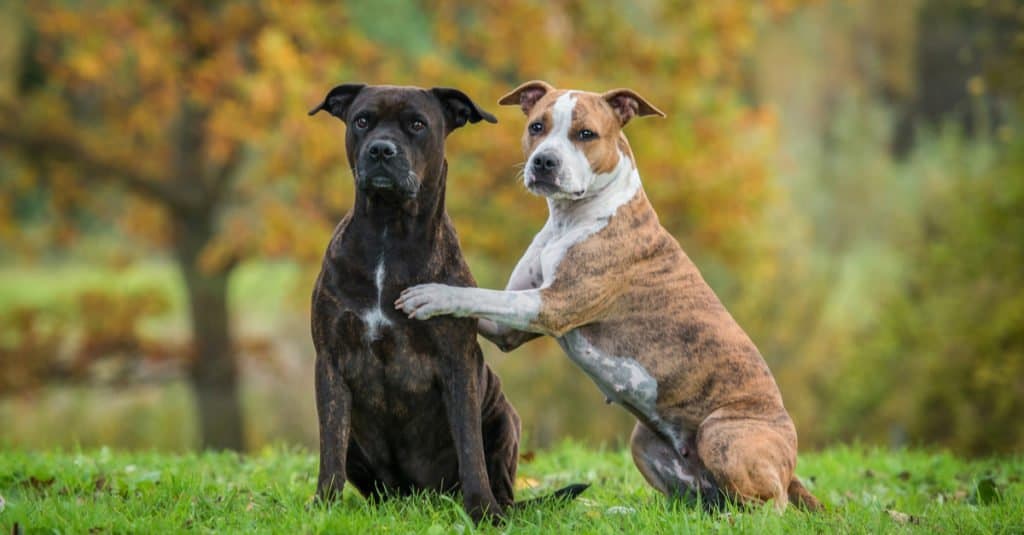
The Amstaff is friendly and affectionate but tends to have a calmer temperament than the American Pit Bull.
©Rita_Kochmarjova/Shutterstock.com
Amstaffs are a bit calmer and less athletic than American Pit Bulls but are no less loving and affectionate. This breed is a bit more reserved around non-family members but open to meeting new people.
American Staffordshire Terriers are wonderful family dogs and can adjust to other pets with proper socialization. They are intelligent, confident, and with proper training, very well-behaved!
The American Pit Bull Is Aggressively Friendly!
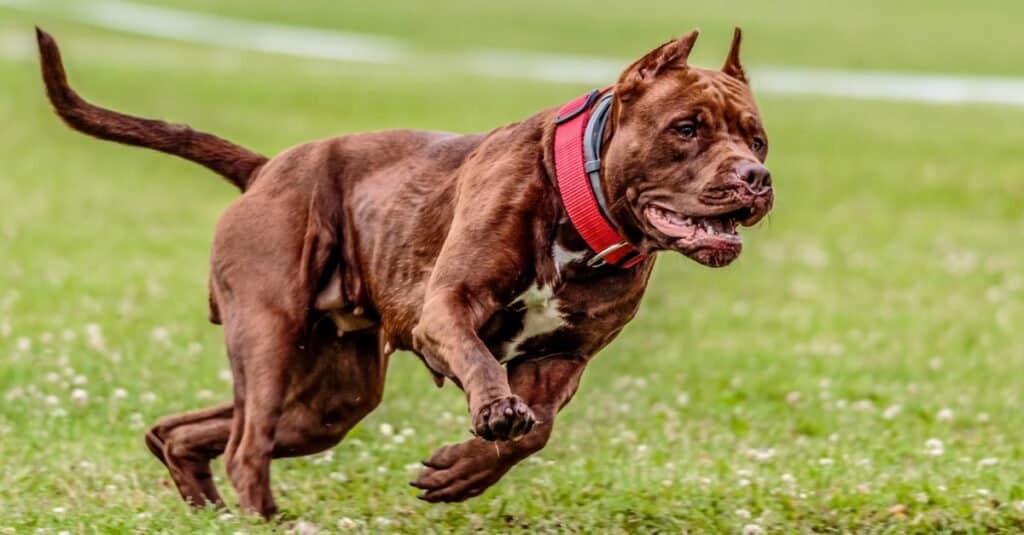
American Pit Bulls are extremely friendly and more energetic and athletic than Amstaffs.
©alekta/Shutterstock.com
American Pit Bulls are far from the aggressive reputation they have unfairly earned. The American Pit is an energetic, friendly, and great family dog! This breed is athletic, loves to play, and needs a lot of regular exercise. American Pits learn obedience well with positive reinforcement and consistent training.
The American Pit requires regular socialization from puppyhood to maintain its friendly and outgoing personality. While Pit Bulls have earned the nickname “Nanny Dog,” supervision with young children is advised for all dog breeds. Additionally, American Pits are known to be aggressive around other pets, particularly smaller animals. They will, however, adjust to other dogs if introduced early in life.
About Pit Bulls and Possible Aggression
Breeds that fall under the umbrella term “Pit Bull” have a negative reputation that, in most cases, is undeserved. This reputation is due to their use in dogfighting, where aggression is cultivated through abuse. The truth is that any dog breed has the potential to be dangerous or aggressive, even the smallest breed.
The Amstaff and the American Pit Bull are known to be significantly less aggressive than many other breeds. The American Temperament Test Society showed that 86% of 743 Amstaffs tested passed, and 87% of 931 American Pit Bulls passed. For comparison, only 81% of collies passed this same test.
While every breed has the potential to be a wonderful pet for the right owner, some breeds suffer due to negative reputations. Pit Bull breeds have a high likelihood of ending up in animal shelters or being abandoned due to improper training, socialization, or simply fear. When selecting a new best friend, reputable resources are the key to finding the right dog for you!
Why are Pit Bulls Not Used as Police Dogs?
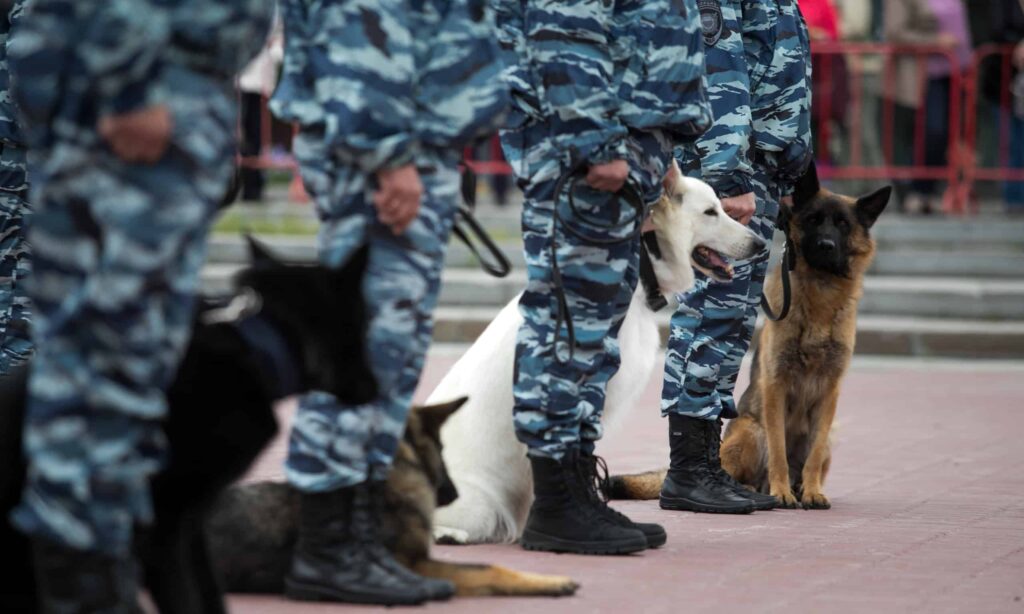
Military working dogs are taught a variety of tasks, such as attacking, tracking, bomb detection, and patrol.
©iStock.com/Semen Salivanchuk
You very may well have seen different types of police dogs, either on TV or in person at some event. Most commonly, you would see German shepherds or Belgian Malinois, but then after that a plethora of other dog breeds used in the line of duty. Different breeds have different strengths, and the trainers use the different dog types to help fight and solve crimes of all shapes and sizes.
But have you ever seen a pit bull in the police service? Most likely you have not.
While pit bulls can be sweet around family members and cuddly on the couch, they lack the breeding traits to make them ideal for police work. Whereas a German shepherd has been selectively bred for high energy and obvious herding skills, pill bulls were originally bred hunting and helping to bring down large game. As the need for this became smaller and smaller, the use of pit bulls moved in the direction of defense and fighting other dogs. When working on following a criminal or someone else, a pit bull most likely would go a few paces and look back to check on its owner to see if they were safe instead of sticking to tracking them down, much like one of the shepherd breeds would. Also, a lot of police scene training for dogs involves them pretending to latch onto a criminal’s arm and restricting their movement. The fear is that the pit bull would be overly aggressive and end up hurting someone instead!
The photo featured at the top of this post is © iStock.com/VictorRicoFoto
Ready to discover the top 10 cutest dog breeds in the entire world?
How about the fastest dogs, the largest dogs and those that are -- quite frankly -- just the kindest dogs on the planet? Each day, AZ Animals sends out lists just like this to our thousands of email subscribers. And the best part? It's FREE. Join today by entering your email below.
Thank you for reading! Have some feedback for us? Contact the AZ Animals editorial team.






